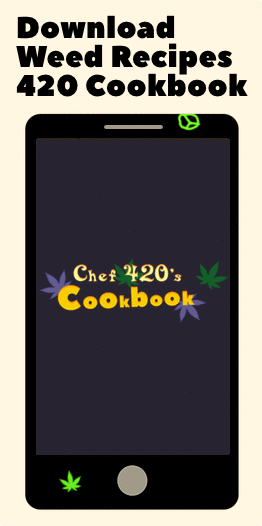GLUTEN FREE COOKING
Chef 420s 7 Tips for Gluten Free Cooking
03/15/2018 18:41

I have received some interest in wheat free treats, and decided to do some research and experimentation. The Chef 420 R&D division is hard at work!
 There are millions of people around the world who routinely avoid wheat due to food allergies and other special diet situations, including autism,and celiac desease-an autoimmune condition where the gluten protein in wheat prevents the absorption of essential nutrients. My own sister has developed an allergy to wheat.All the recipes that I will post are tried and tested.They will work for you too.
There are millions of people around the world who routinely avoid wheat due to food allergies and other special diet situations, including autism,and celiac desease-an autoimmune condition where the gluten protein in wheat prevents the absorption of essential nutrients. My own sister has developed an allergy to wheat.All the recipes that I will post are tried and tested.They will work for you too.
I've learned that people can live well without wheat all you need is a few good tips for cooking with wheat substitutes, and practice.
 #1 Beginners should choose a cookbook specially developed for the wheat sensitive diet.This will assure early success and build confidence and experience.You can convert your own recipes to wheat free later, when you're a pro.
#1 Beginners should choose a cookbook specially developed for the wheat sensitive diet.This will assure early success and build confidence and experience.You can convert your own recipes to wheat free later, when you're a pro.
2.Wheat flour must be replaced with an alternative flour, in some cases a combination of alternative flour is needed as they each have there own texture and effect.The most common alternatives are;rice,bean,soy,sorghum,potato,and tapioca.
3.When measuring flour, spoon it into the measuring cup.Don't pour it.Level the top with the flat side of a knife.Don't "heap" or round off unless the recipe specifies, and never pack it down.
4.A special ingredient such as xanthan gum (a natural stabilizer or thickener) will be needed in some recipes to compensate for the lack of gluten and improve the texture.Without it baked goods crumble and fall apart.
5.You may need to add a touch more spices,herbs or flavorings than normal to compensate for the loss of wheat flavor.
6.Use smaller baking pans instead of one larger one. Oil your pans well before using. For cookies, use parchment or wax paper to prevent sticking. Bundt cake pans seem to distribute heat more evenly.
7.Make sure you mix the alternative flour mixture well,Electric mixers can help incorporate ingredients.
Xanthan gum is made by fermenting corn or cabbage sugar with a microbe called "Xanthomonas campestris". Xanthan gum works like gelatin in recipes. If too much is used you may notice a heavy or gummy texture to your recipe so measure carefully. It is used mainly in the food industry as a thickener, it is vegan and great for cooking and baking for people with certain food allergies or if you are trying to omit dairy, eggs, gluten, or soy from your diet.
To use xanthan gum in your dairy free recipes,use about 1/8 teaspoon per cup of liquid and combine these with a blender, not by hand as it will clump up if not stirred constantly. For sauces, blending the xanthan gum with a little oil before adding the soymilk or rice milk makes for a more creamy texture.
----Tips for using xanthan or guar gum in gluten free cooking----
Bread and pizza dough recipes add 1 teaspoon xanthan or guar gum per cup of gluten free flour.
Cake, muffin and quick bread recipes, add 1/2 teaspoon xanthan or guar gum per cup of gluten free flour used.Cookie or bar recipes, add 1/2 teaspoon (or less) xanthan or guar gum per cup of gluton free flour used.
For best results always follow the recipe recommendations.
GUAR GUM FACTS AND USE
10/06/2018 20:41Guar gum comes from the seed of the bean-like Legume plant, sometimes known as the Indian tree.It is high in soluble fiber, and has 8 times the thickening properties as cornstarch. Like xanthan gum measure carefully when using guar gum in gluten free recipes.Guar gum is a high fiber product and has been associated with upset stomach in some people.
---Tips for using xanthan or guar gum in gluten free cooking---
Bread and pizza dough recipes add 1 teaspoon xanthan or guar gum per cup of gluten free flour.
Cake, muffin and quick bread recipes, add 1/2 teaspoon xanthan or guar gum per cup of gluten free flour used.Cookie or bar recipes, add 1/2 teaspoon (or less) xanthan or guar gum per cup of gluten free flour used.
For best results always follow the recipe recommendations.







